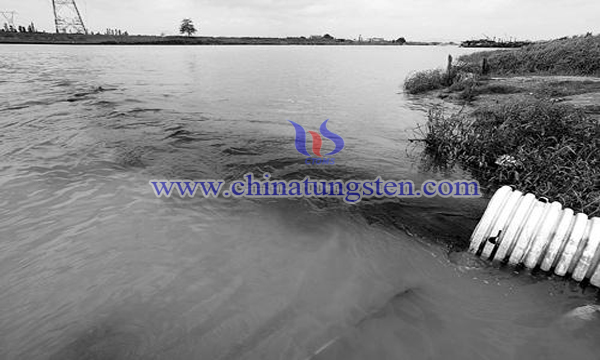Nanoscale Bismuth Tungstate Modified by Carbon Quantum Dots
- Details
- Category: Tungsten Information
- Published on Wednesday, 30 May 2018 16:44
With the development of nanomaterials technology, semiconductor photocatalysis technology has broad prospects for development. In particular, the development of visible light responsive semiconductor photocatalytic materials further promotes the application of semiconductor photocatalysis technology in the field of environmental remediation.

Bismuth tungstate is one of the widely studied photocatalysts. It is considered that carbon quantum dots are a new kind of luminescent materials. Due to the effect of quantum size effect and dielectric limit, small size carbon nanoparticles have unique photoelectric properties and can be used as modifiers for bismuth tungstate.
The preparation of carbon quantum dots includes the following steps:
(1) The precursor solution was obtained by mixing glucose solution with ethylenediamine.
(2) The precursor solution was reacted at 140 ~ 220°C, and the reaction product solution was obtained.
(3) Centrifugation of the reaction product solution and supernatant fluid for dialysis were used to obtain carbon quantum dots solution.
(4) Carbon quantum dots were obtained by freeze-drying the carbon quantum dots solution.
Carbon quantum dots modified bismuth tungstate composite photocatalyst includes the following steps.
(1) The carbon quantum dots and sixteen alkyl three methyl ammonium bromide were added to the Bi (NO3)3•5H2O solution to obtain the suspension.
(2) Adding Na2WO4•2H2O solution into suspension to obtain mixed solution.
(3) The mixed solution was prepared by hydrothermal reaction, and a single layer of bismuth tungstate nanocomposite photocatalyst modified by carbon quantum dots was obtained.
Carbon quantum dots have the properties of saving and transmitting electrons. Therefore, carbon quantum dots can effectively separate the light generated charge of single layer bismuth tungstate nanoscale, inhibit the recombination of light generated charge, prolong the lifetime of the electron hole and promote the transmission of optoelectronic, improve the utilization of photoelectron, and interact with single layer bismuth tungstate nanoscale. Synergistic enhancement effect has greatly enhanced the photocatalytic activity of single layer bismuth tungstate nanosheets. In addition, the carbon quantum dots have the upper conversion function, which can promote the absorption of near infrared light in the composite catalyst, further enhance the absorption of the visible light region spectrum by the composite catalyst, and make the low energy photons absorbed in the visible light and release the high-energy photons. Therefore, the modification can effectively improve the absorbability of bismuth tungstate and bismuth tungstate. The photocatalytic activity of the light region is visible.
- Tungsten Oxide Manufacturer & Supplier, Chinatungsten Online: www.tungsten-oxide.com
- Tungsten News & Prices of China Tungsten Industry Association: www.ctia.com.cn
- Molybdenum News & Price: news.molybdenum.com.cn
- Tel.: 86 592 5129696; Fax: 86 592 5129797; Email: sales@chinatungsten.com



 sales@chinatungsten.com
sales@chinatungsten.com